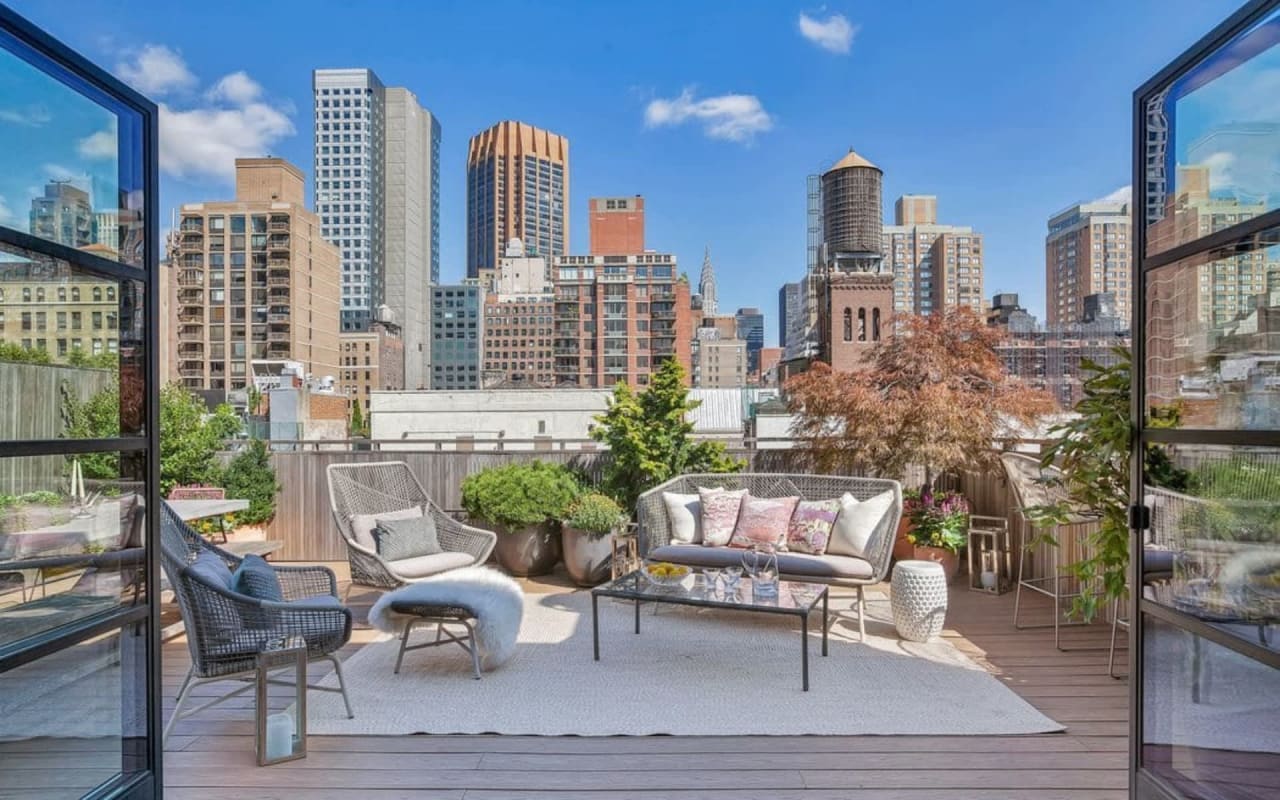Mortgage interest rates saw record-low numbers at the onset of the pandemic in 2020, leading to a surge of interest from buyers hoping to make the most of lower borrowing costs. For the past year and a half, however, rates have been back on the rise, and many home buyers who want to step into the Manhattan real estate scene are wondering if it’s still a good time to do so. Across the Empire State, 30-year, fixed-rate mortgages are hovering at just over 7%, creating tension for buyers who aren’t sure they want to commit to those rates. However, there are a handful of reasons why investing now is still a strong option. Whether you’re looking for Manhattan townhomes in areas like Chelsea and Greenwich Village or a condominium on the Upper East Side, let’s explore how rising interest rates are affecting the current New York City buying market.
Effect on demand and inventory
What potential buyers may not realize is that rising interest rates could work in their favor. Supply and demand is the name of the game in real estate, and when interest rates rise, demand tends to drop. This is primarily due to buyers being more hesitant about investing. However, a drop in demand can make it easier to secure the property you’re interested in. Less demand leads to less competition, especially in high-inventory areas. In a market that was previously a seller’s market, a shift in mortgage rates can actually bring it closer to a neutral market or push it all the way to a buyer’s market. Similarly, when demand is low, inventory may start to rise. If homeowners are still deciding to sell, but their homes aren’t selling as quickly, that can bode well for buyers who want more options.
Effect on pricing

As supply and demand change with rising interest rates, so does pricing. Higher demand and lower inventory will always produce a seller’s market, where prices are higher. These conditions were cropping up all across the country two years ago when mortgage rates fell, and buyers flooded the real estate market. However, it’s more common now to see lower demand and higher inventory contributing to lower prices as eager sellers try to entice the buyers who are out there looking for a home. Overall, the Manhattan real estate market has fallen into this second category. It’s shown greater inventory and less demand, which has kept year-over-year prices from changing dramatically. However, with so many distinct neighborhoods in the city, pricing trends can differ depending on where you’re looking. Anyone who's curious about how prices could change in the coming months should seek the input of an experienced realtor.
Higher rates mean higher mortgage payments
Buyers are most often put off by rising interest rates because it means a higher monthly mortgage payment. Ultimately, it makes buying Manhattan townhomes more expensive, especially at the start. But many buyers don’t realize that they can always refinance their mortgage down the line. This means they exchange their current loan for a new loan with the potential benefit of lowering their interest rates. Refinancing can also shorten the length of a loan or reduce monthly payments. Homeowners typically want at least 20% equity in their home before applying to refinance. This can also help those who want to reduce or remove their mortgage insurance. Those who own less than 20% equity in their homes, however, may find that they have to take on a higher interest rate or greater mortgage insurance.
Investments can serve dual purposes
Another reason it’s worthwhile to invest in New York City real estate, even when interest rates are high, is that these properties are perfect for serving dual purposes. Hesitant buyers may not know how to invest well or may feel like they’re not getting the deal they were hoping for, but down the line, they’ll have greater equity and more leverage if they want to purchase an additional property or sell when the market is stronger.
Real estate is one of the best assets to hold, as it diversifies an investment portfolio with an option that can provide tax breaks and greater stability. Homes in New York City also allow buyers to bring in rental income. Turning a Manhattan home into a rental can be a great way to cover the costs of mortgage payments without tapping into existing income streams.
NYC prices are more negotiable

Buyers should remember that they’ll likely have more negotiation power in the Manhattan market, especially if they’re looking for homes in neighborhoods with higher demand. Areas where inventory is high present buyers with the opportunity to put in their preferred offer and work on a compromise with their seller. In competitive markets where inventory is lower, buyers often have to put in their most competitive offers upfront. They compete with other buyers and don’t have as much leeway when it comes to negotiating with their sellers. So, as buyers consider investing in New York City despite the rising interest rates, they can rest assured that they may be able to secure a lower price depending on where they look and how they approach negotiations.
Partner with an established team
To make a strong investment in the current Manhattan market, buyers must partner with an established real estate professional. Caryl Berenato is a licensed broker with nearly 40 years of experience serving clients across New York City. Caryl has seen the cyclical changes that happen throughout Manhattan year after year and can provide clients with expert guidance regarding when and how to invest. If you’re curious about whether it’s the right time to make a move and find your next property in the Big Apple, set up an appointment with Caryl Berenato today.






























